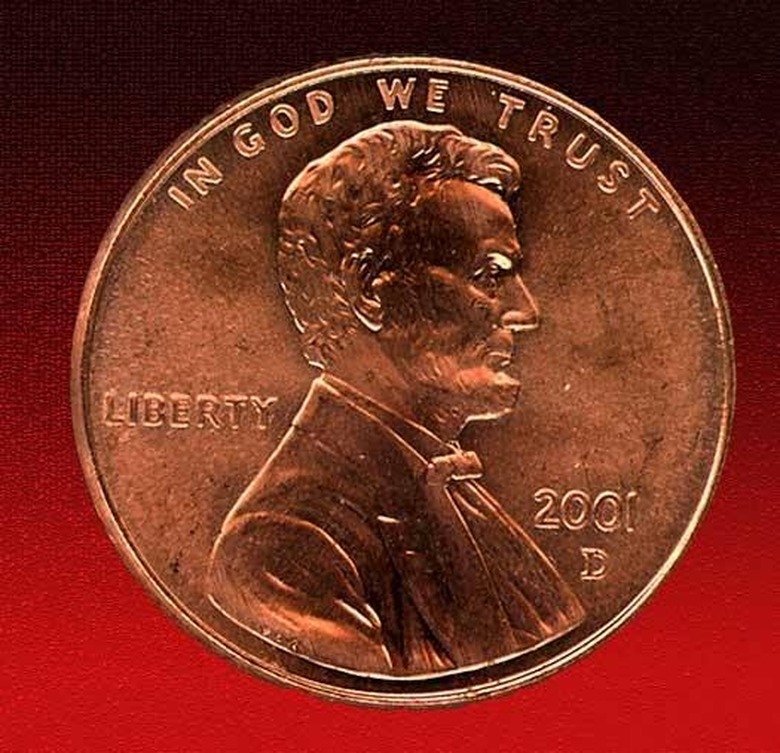Why Does Citric Acid Clean Pennies?
How Pennies Get Dirty
How Pennies Get Dirty
Millions of pennies are circulating at any given time throughout the United States. As the pennies circulate, they begin to lose their shine. This is largely due to the way metals react with air. As the metal continues to react with the air, it develops a coat of copper oxide around the outer layer of the coin. It is important to note that this is not rust, since rust is iron oxide. Pennies do not contain iron, so they can't create iron oxide. A layer of dirt and grime can also attach itself to the copper oxide layer.
Citric Acid
Citric Acid
Citric acid is commonly found in most citrus fruits such as pineapples and oranges, and is most concentrated in lemons. Citric acid cannot dissolve copper or most other metals. However, it does react with and dissolve copper oxide.
How It Cleans
How It Cleans
As the penny is placed in the citric acid solution, the citric acid cleans it in two ways. First, the citric acid is in a liquid form. This allows the dirt and grime on the penny to loosen from the metal. Second, and most importantly, the acid in the solution reacts with the copper oxide layer that has created the tarnished look of the penny. The citric acid removes the copper oxide from the penny and rinses away the loosened dirt and grime. The acid is not strong enough to dissolve the copper itself, so all that is left is the clean, shiny copper surface.
Strength
Strength
You may notice that different citrus fruits require different amounts of time for the cleaning process. This is because each fruit has a different amount of citric acid. In general, the more sour the fruit tastes, the more citric acid the fruit contains. The more citric acid a fruit contains, the faster its juice will dissolve the copper oxide and clean the penny.
Cite This Article
MLA
Sherwood, Chris. "Why Does Citric Acid Clean Pennies?" sciencing.com, https://www.sciencing.com/does-citric-acid-clean-pennies-4885526/. 24 April 2017.
APA
Sherwood, Chris. (2017, April 24). Why Does Citric Acid Clean Pennies?. sciencing.com. Retrieved from https://www.sciencing.com/does-citric-acid-clean-pennies-4885526/
Chicago
Sherwood, Chris. Why Does Citric Acid Clean Pennies? last modified March 24, 2022. https://www.sciencing.com/does-citric-acid-clean-pennies-4885526/
